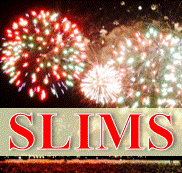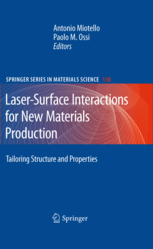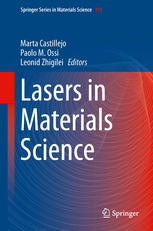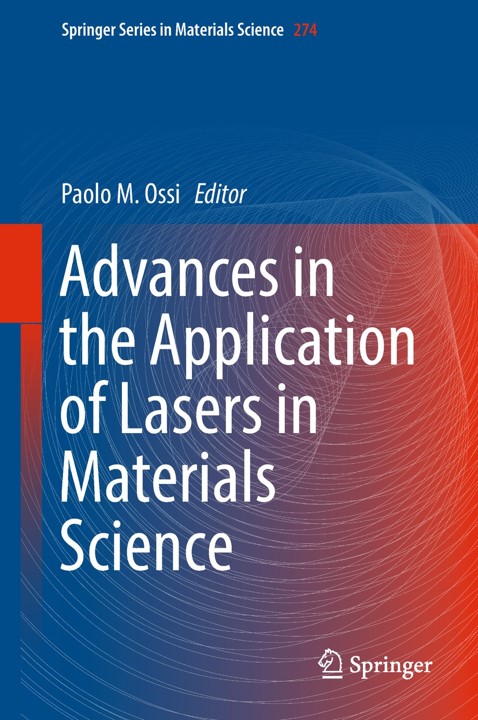|
Tentative List of Lectures:
Nadezhda Bulgakova (HiLASE Centre, Institute of Physics CAS, Czech Republic)
Title: Modeling of laser-matter interaction: Linking theory and experiment
Topics to be covered: The role of theoretical analysis and computer simulations for achieving understanding and control of laser-induced processes;
Capabilities and limitations of atomistic, continuum, and mesoscopic models; Continuum-level description of heat flow, propagation of focused laser beams
through transparent solids with associated non-linear effects; Elastoplasticity models for description of laser-induced stresses leading to material redistribution;
Models based on the rate equations for free-carrier population in bandgap materials; Examples of model verification and interactive discussion of the routes
of the model development; Latest developments on large-scale multi-physics modeling informed by quantum mechanical calculations.
Anna Paola Caricato (University of Salento, Italy)
Title: Matrix-assisted laser-based analysis and deposition techniques
Topics to be covered: Polymers and biomaterials; UV laser interaction with polymers and biomaterials at different laser energy densities: thermal and photochemical effects;
thermally induced ablation mechanisms in UV and IR matrix-assisted laser interactions with polymers; examples of polymer, biomaterial, and nanoparticle deposition using matrix-assisted
laser-based techniques; trends and future perspectives in matrix-assisted laser-based techniques; matrix-assisted laser desorption ionization (MALDI) for mass spectrometry of large molecules;
trends and future perspectives.
Maria Dinescu (INFLPR, Romania)
Title: Lasers in soft material processing: Laser direct writing via multi photon absorption and laser induced forward transfer
Topics to be covered: Two photon polymerization: theoretical background (power threshold, voxel), experimental set-up, examples, applications (medicine, nanofibers manipulations);
Laser Induced Forward Transfer (LIFT): principle, LIFT variants (Blister Actuated LIFT, reactive LIFT, DECAL), sacrificial layer, LIFT in solid phase, LIFT in liquid phase - viscosity influence;
applications (sensors, roll to roll printing, interdigital electrodes, OLEDS).
David Geohegan (University of Tennessee - Knoxville, USA)
Title: Understanding and tailoring laser ablation processes with in situ diagnostics for thin film and nanostructure growth
Topics to be covered: Laser ablation plasma plumes, expansion, and propagation for thin film formation by pulsed laser deposition – kinetic energies and effects.
Plume interactions with background gases – kinetic energy moderation, spatial confinement, condensation into nanoparticles, and deposition.
In situ diagnostic techniques to characterize plasma plumes and deposited products – 1) gas-phase imaging, ion probes, and spectroscopy, 2) laser reflectivity,
Raman spectroscopy and photoluminescence of the growing film. Use of in situ diagnostics to tailor the growth of nanomaterials by laser ablation and laser processing –
from nanoparticles to nanotubes, to atomically-thin 2D materials like graphene, and Janus dichalcogenide monolayers. Trends and future perspectives in the use of in situ
laser diagnostics and processing to enable transformative new manufacturing approaches and autonomous synthesis.
Bilal Gökce (University of Wuppertal, Germany)
Title: Laser ablation synthesis of nanoparticles for laser additive manufacturing
Topics to be covered: Pulsed laser ablation in liquids (PLAL); laser ablation synthesis in solution (LASiS); upscaling, cavitation bubble engineering; nanoparticle size control;
(nano)composite manufacturing; powder bed fusion of metals and polymers; selective laser melting; selective laser sintering; photopolymerization; aplications and trends for nanocomposites
use in optics, magnetism and catalysis.
Jörg Hermann (French National Research Centre CNRS, France)
Title: Laser-induced breakdown spectroscopy (LIBS)
Topics to be covered: Fundamentals of LIBS plasma generation and plume expansion at atmospheric pressure; Properties of LIBS plasmas; Modeling of plasma emission;
Diagnostics of laser-induced plasmas; Elemental analysis of materials via "calibration-free" laser-induced breakdown spectroscopy: validity of physical model, requirements for apparatus
and experimental conditions, state-of-art, examples on analyses of different types of materials: thin films, optical glass, metals, food;
Evaluation of analytical performance and limits of detection; Remaining challenges and perspectives in terms of further improvements and industrial applications.
Wolfgang Kautek (University of Vienna, Austria)
Title: Laser-induced non-thermal processes
Topics to be covered: Excitation mechanisms of solids in the time range of femtoseconds to picoseconds. Fundamentals of sub-picosecond pulse laser interaction with metals: two-temperature model,
influence of density of states, thin films, metal ablation, hot electron electrochemistry. Fundamentals of sub-picosecond pulse laser interaction with dielectrics: Multiphoton and avalanche ionization,
Coulomb explosion, non-thermal melting, dielectric ablation. Role of defects: intrinsic defects, laser-generated defects.
Thomas Lippert (Paul Scherrer Institut, Switzerland)
Title: Pulsed laser deposition (PLD) of oxide materials: Fundamental aspects
Topics to be covered: Fundamentals of pulsed laser deposition; parameters that influence the deposition; possible problems and solutions in PLD, understanding problems of PLD;
challenges in controlling the composition of thin films; possible techniques to monitor/improve PLD; thin films as model systems for energy research.
Ion Mihailescu (INFLPR, Romania)
Title: Direct energy deposition additive manufacturing: Computational fluid dynamics modeling and experimental verification
Topics to be covered: Introduction to current and emerging methods of laser-enabled additive manufacturing; Direct energy deposition (DED) 3D printing of near-net-shaped parts;
Melting of powder particles, conduction-mode melt flow, formation of bubbles in the melt pool, trapping of bubbles by solidification and generation of pores, effects of thermocapillary
or Benard–Marangoni convection force and recoil pressure on the melt pool dynamics; Computational fluid dynamics modeling of DED using the volume of fluid and discrete element modeling techniques;
Experimental validation of computational predictions for laser additive manufacturing of various compounds.
Antonio Miotello (University of Trento, Italy)
Title: Laser versus ion-induced sputtering processes in solids and production of new materials of interest for energy and the environment fields
Topics to be covered: Ion-induced transport and thermal processes in solids; vaporization and phase-explosion as the main ablation mechanisms in laser-surface interaction;
nanoparticles production, through laser ablation, for catalysis and photocatalysis processes relevant to energy and the environment; nanodiamonds production containing nitrogen-vacancy
centers for application in quantum sensing field.
Paolo Ossi (Politecnico di Milano, Italy)
Title: Controlled laser synthesis of nanoparticle arrays with an application to therapeutic drug monitoring
Topics to be covered: Nanoparticle synthesis by PLD; the ambient: gas vs liquid; nanoparticle self-assembling; different morphologies and their control; optical properties
(Surface Plasmon Resonance, SPR); Surface Enhanced Raman Spectroscopy (SERS); searching for and checking sensor properties: sensitivity, selectivity, lateral uniformity, stability;
a real-world related application: SERS as a Therapeutic Drug Monitoring (TDM) technique to detect antiepileptic drugs (AEDs) in biofluids (blood, saliva).
Gediminas Račiukaitis (Center for Physical Sciences and Technology, Lithuania)
Title: Ultrashort pulse lasers: From research to real applications
Topics to be covered: Interaction of ultrashort light pulses with materials; opportunities and challenges in the application of them in precise material processing;
optimisation of laser ablation process; burst of laser pulses and their interaction with materials; beam shaping; upscaling toward real applications.
Juergen Reif (BTU Cottbus, Germany)
Title: Laser physics for materials scientists
Topics to be covered: General laser principles, control over wavelength, tunability, cw/pulsed operation, pulse duration, power/fluence, repetition rate;
peculiar features of laser media and their excitation, the role of resonators; the extension of the available wavelength range by non-linear optical processes,
such as harmonic generation, optical parametric oscillators/amplifiers; beam characterization, beam delivery (focusing, scanning) and possible manipulation of
the temporal and spatial pulse/beam shape to control the laser-material interaction; application to the formation of Laser-Induced Periodic Surface Structures (LIPSS)
in order to modify the surface functionality.
Salvatore Stagira (Politecnico di Milano, Italy)
Title: High-order harmonic generation: a spectroscopic tool on the attosecond and angstrom scale
Topics to be covered: Description of the high-order harmonic generation (HHG) process in gases starting from a “simple-man” picture and then extending it to a semi-classical description;
overview on HHG applications in Attosecond Science; HHG molecular spectroscopy and on novel ultrafast EUV sources based on HHG; introduction to HHG in solids: differences and similarities with gases;
spectroscopic applications in solid-state systems.
Koji Sugioka (RIKEN, Japan)
Title: Ultrafast laser 3D micro and nanoprocessing
Topics to be covered: Principle of ultrafast laser 3D processing; classification of 3D processing; undeformative processing (internal modification); subtractive processing
(3D glass micromachining); additive processing (two-photon polymerization and 3D printing of biomaterial, metal, and glass); hybrid ultrafast laser 3D processing; 3D photonic devices
and optical storage; 3D microfluidics and nanofluidics; high-sensitivity chemical and biological sensors; applications of functional 3D micro and nanosystems.
Leonid Zhigilei (University of Virginia, USA)
Title: Laser-induced thermal processes: From thermoelastic response to melting, vaporization, and phase explosion
Topics to be covered: Heating rates and energy relaxation mechanisms under conditions of fs, ps, and ns laser irradiation; thermoelastic material response below the threshold for melting,
thermal and stress confinement regimes, photoacoustics and photomechanical damage; kinetics and mechanisms of laser-induced meting and resolidification; generation of
crystal defects; vaporization, boiling, and explosive boiling; open questions and novel/emerging applications that rely on thermal processes.
Lecture Notes
Lecture slides and notes prepared by the lecturers will be distributed to the participants of the school through the internal part of this web site.
The collections of lecture notes from the School are regularly published in Springer Series in Materials Science (
Vol. 130 in 2010,
Vol. 191 in 2014, and
Vol. 274 in 2018).
|




